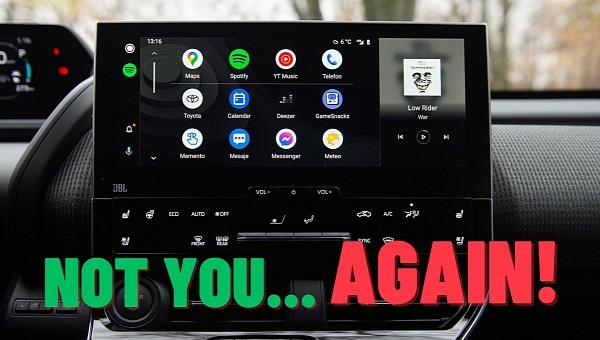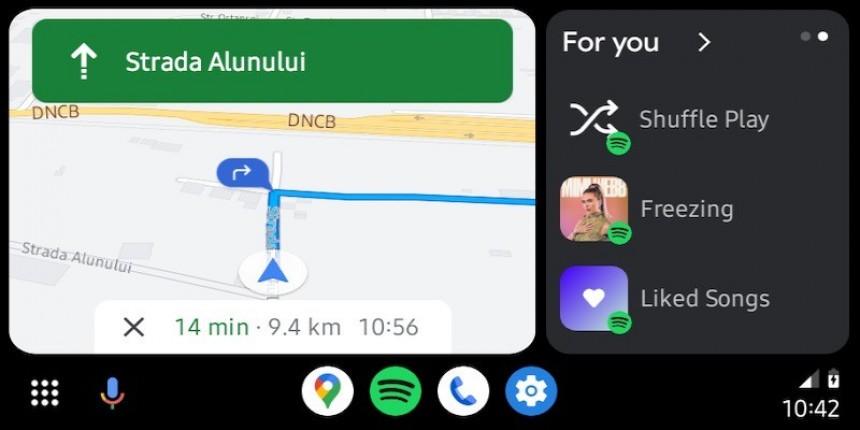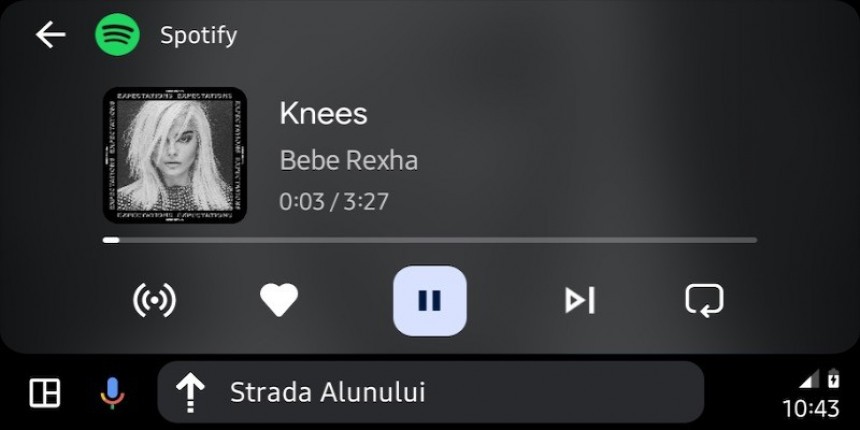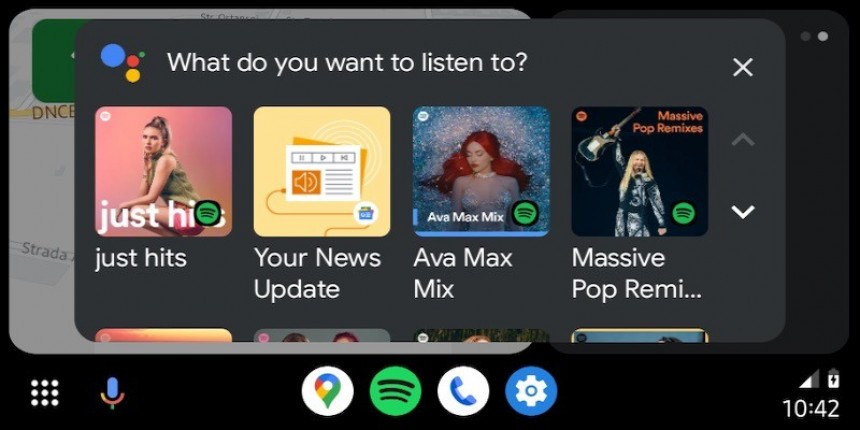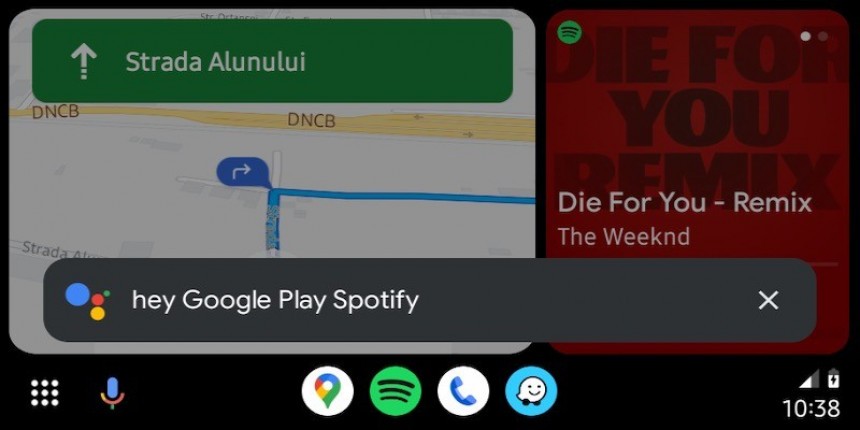Google announced Android Auto Coolwalk in mid-January, and the rollout is now taking place to users in stages.
Because the reliability of the new design is critical, Google isn’t pushing the update to all devices at once. Instead, the company uses a phased rollout, which gives it more time to determine bugs in an early stage.
The excitement produced by Coolwalk is huge, but users can’t do anything to enable the new design earlier. As such, the wait for Google to enable Coolwalk is often very frustrating, especially because no ETA exists.
Some users are struggling with an even more mysterious behavior. After getting Coolwalk, the redesign goes away, leaving them with the old design.
Google rolls out the redesign in stages specifically to collect reliability data on the hardware and software configuration in cars. The process begins with a small set of configurations that include media receivers, mobile devices, and the apps installed on them. If no bugs are discovered, Google then improves the availability for a specific configuration.
This means more users with the same mobile phones and head units are provided with Coolwalk.
Case in point, a Samsung Galaxy S22 and a Toyota RAV4. Google first enables Coolwalk for only a few drivers who use a Galaxy S22 in a RAV4, trying to determine if everything works properly. If the reliability data shows that it does, more RAV4 owners who connect an S22 to their head units get the update. The availability is improved in stages until everybody receives the new design.
Given Coolwalk isn’t tied to an Android Auto version, Google enables the design for every set of devices based on the collected reliability data.
The code to run Coolwalk is already bundled with the latest versions of Android Auto, but it needs the right instructions to run.
The process relies on server flags that must be activated by Google itself. When they are triggered, Android Auto connects to Google’s servers and gets the necessary instructions to activate Coolwalk, only if the company allows the new design.
If the collected reliability data allows Coolwalk, your hardware configuration is provided with the new UI when the server instructions are retrieved. If it doesn’t, your head unit displays the old interface.
There are many reasons why this happens.
First of all, a hardware change could trigger the removal of Coolwalk. If you get a new mobile device, the collected reliability data is no longer valid for your setup. As such, Android Auto tells the server that you have another phone, so Google must determine the likelihood of your new hardware hitting bugs if Coolwalk is enabled.
The process can take anywhere from a few days to several weeks, but eventually, you’ll get Coolwalk again.
Then, if you cleared Android Auto’s data, Coolwalk is gone as well. Many users do this to resolve various bugs in the app, as deleting the app data sometimes removes errors too. If Coolwalk is enabled, clearing the Android Auto data also disables the redesign because it purges the server flags. As such, Android Auto no longer has the necessary instructions to know what interface it should load, so it sticks with the default one. Currently, the default interface in Android Auto is the non-Coolwalk version.
Getting the new UI back wouldn’t take long. Given Android Auto regularly pings Google for instructions, the redesigned interface should be back in just a few days. This is because your hardware configuration has already been whitelisted, so Google just needs to tell your device that it’s allowed to run Coolwalk.
At the end of the day, any changes that you make on your devices and are related to Android Auto could eventually cause Coolwalk to disappear.
Google has not shared timing information regarding the Coolwalk broad availability, but this phase should be reached by the end of the year. If the rollout makes the expected progress, the availability should improve substantially in the coming months, so the majority of users should already be on Coolwalk by the summer.
Needless to say, once Coolwalk is enabled, there’s no option to go back to the previous design. Some third-party methods could work, but once Coolwalk is enabled by default in Android Auto, restoring the old interface will likely be blocked.
The excitement produced by Coolwalk is huge, but users can’t do anything to enable the new design earlier. As such, the wait for Google to enable Coolwalk is often very frustrating, especially because no ETA exists.
Some users are struggling with an even more mysterious behavior. After getting Coolwalk, the redesign goes away, leaving them with the old design.
How Google decides when a device gets Coolwalk
Before I delve into the reasons that could cause Coolwalk to disappear, it’s important to know how the feature is enabled.Google rolls out the redesign in stages specifically to collect reliability data on the hardware and software configuration in cars. The process begins with a small set of configurations that include media receivers, mobile devices, and the apps installed on them. If no bugs are discovered, Google then improves the availability for a specific configuration.
This means more users with the same mobile phones and head units are provided with Coolwalk.
Case in point, a Samsung Galaxy S22 and a Toyota RAV4. Google first enables Coolwalk for only a few drivers who use a Galaxy S22 in a RAV4, trying to determine if everything works properly. If the reliability data shows that it does, more RAV4 owners who connect an S22 to their head units get the update. The availability is improved in stages until everybody receives the new design.
Given Coolwalk isn’t tied to an Android Auto version, Google enables the design for every set of devices based on the collected reliability data.
How your device knows what Android UI to load
When Coolwalk is ready for your devices, Google enables it with a server-side switch.The code to run Coolwalk is already bundled with the latest versions of Android Auto, but it needs the right instructions to run.
The process relies on server flags that must be activated by Google itself. When they are triggered, Android Auto connects to Google’s servers and gets the necessary instructions to activate Coolwalk, only if the company allows the new design.
If the collected reliability data allows Coolwalk, your hardware configuration is provided with the new UI when the server instructions are retrieved. If it doesn’t, your head unit displays the old interface.
Why Coolwalk sometimes goes away
It all comes down to the said server flags. Android Auto regularly pings Google’s servers to figure out if it’s allowed to run Coolwalk, so when the retrieved instructions change, the new UI could be disabled.There are many reasons why this happens.
First of all, a hardware change could trigger the removal of Coolwalk. If you get a new mobile device, the collected reliability data is no longer valid for your setup. As such, Android Auto tells the server that you have another phone, so Google must determine the likelihood of your new hardware hitting bugs if Coolwalk is enabled.
The process can take anywhere from a few days to several weeks, but eventually, you’ll get Coolwalk again.
Then, if you cleared Android Auto’s data, Coolwalk is gone as well. Many users do this to resolve various bugs in the app, as deleting the app data sometimes removes errors too. If Coolwalk is enabled, clearing the Android Auto data also disables the redesign because it purges the server flags. As such, Android Auto no longer has the necessary instructions to know what interface it should load, so it sticks with the default one. Currently, the default interface in Android Auto is the non-Coolwalk version.
At the end of the day, any changes that you make on your devices and are related to Android Auto could eventually cause Coolwalk to disappear.
Google has not shared timing information regarding the Coolwalk broad availability, but this phase should be reached by the end of the year. If the rollout makes the expected progress, the availability should improve substantially in the coming months, so the majority of users should already be on Coolwalk by the summer.
Needless to say, once Coolwalk is enabled, there’s no option to go back to the previous design. Some third-party methods could work, but once Coolwalk is enabled by default in Android Auto, restoring the old interface will likely be blocked.
